Air defense systems in Russia. SAM "Buk"
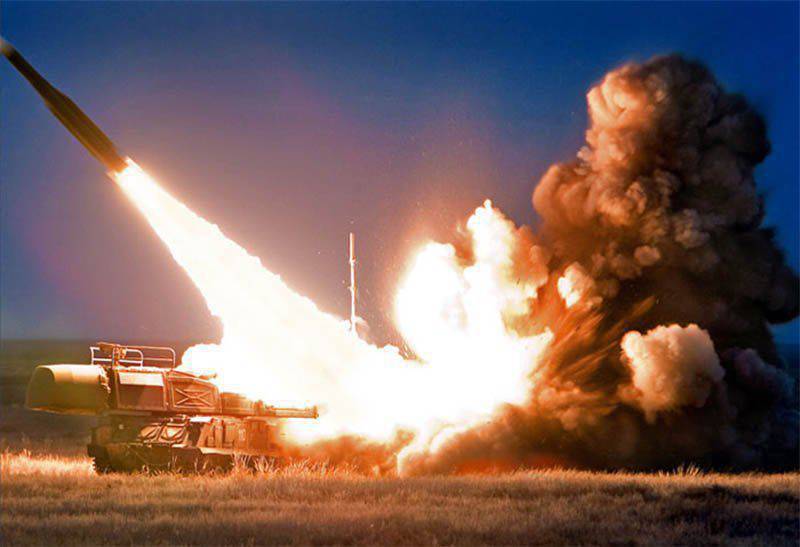
Do we have many air defense systems? In 1967, the "Cub" air defense system entered service with the Soviet Army, designed to defeat air attack weapons at a range exceeding the use of aircraft weapons. A distinctive feature of the "Cube" complexes was the placement of self-propelled launchers and self-propelled reconnaissance and guidance systems on a tracked chassis, which made it possible to keep up with armored vehicles. However, due to the high cost of the "Cube" complexes in many Soviet tank divisions, the anti-aircraft missile regiment was equipped with the Osa air defense system.
At the time of the appearance of the Kub SAM, it had no analogues and was very successfully used in a number of regional conflicts. During the “Doomsday War” in 1973, the Kvadrat export modification complexes inflicted heavy losses on Israel’s aviation. With the accumulation of experience in combat use and operation, the creation of new modifications with improved combat characteristics was carried out. In 1976, the Kub-M3 air defense system with enhanced noise immunity entered service. For this option, the range of destruction of air targets was 4-25 km. Reach in height - from 20 to 8000 m.
However, like any other weapon, complexes of the Cube family were not without drawbacks. In the course of real hostilities, it turned out that transport-loading vehicles based on ZIL-131, in the absence of a developed road network, can not always reach self-propelled launchers. In the event of a failure or destruction of a self-propelled reconnaissance and guidance system, the entire anti-aircraft missile battery completely lost combat effectiveness. In the second half of the 1970s, the military was no longer fully satisfied with the capabilities of the Cuba in terms of combating combat helicopters and the inability to simultaneously fire at several targets.
In 1978, the delivery of the Kub-M4 modification began. In fact, this option was a transition. In order to increase the ammunition ready for use and increase the number of target channels, the self-propelled 9A38 firing system was additionally conducted. The equipment of the combat vehicle included: a radar, a television optical sight, and a computer system designed to detect a target and aim a 3M9M3 or 9M38 missile system with a semi-active seeker, as well as its own life support system, navigation, orientation and topographic sensing equipment, “friend or foe” recognition and communications with other battery machines. The inclusion of an additional self-propelled firing system in the air defense system allowed to increase the autonomy and combat stability of the complex as a whole. SOU 9A38 combined the functions of the SPU and partially replaced the SURN, independently detecting targets in a given sector, performing capture and auto tracking.
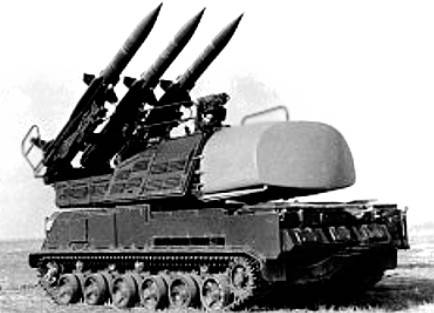
After the introduction of the SOA 9A38 into the Cube-M4, it became possible to direct three own missiles and three missiles of the self-propelled launcher associated with it.
SAMs of the Cube family remained in service with the Russian army until the mid-1990s. In the 21st century, almost all complexes of this type located at the storage bases were disposed of, and a small part of the most recent Cube air defense systems, after reconstructing and “minor” modernization, was transferred to the Allied countries.
SAM "Buk"
In 1980, the Buk air defense system was adopted. The Buk anti-aircraft missile division included: a 9C470 mobile command post, 9C18 Kupol detection and targeting station, two anti-aircraft missile batteries with two 9A310 self-propelled firing systems and one 9A39 launcher-loading unit, as well as a communications unit, technical support and maintenance. Four divisions were organizationally reduced to an anti-aircraft missile brigade, to control the actions of which the ACS "Polyana" was used. The brigade also had its own radar equipment and radio communication machines. Organizational anti-aircraft missile brigade was subordinate to the Army Air Defense Command.
The 9C470 mobile command post, located on the GM-579 chassis, provided for the reception and processing of information received from SOC 9C18, SOU 9A310 and from higher CP. In the course of combat work in automatic or manual mode, targets were selected and distributed between self-propelled firing installations indicating the sectors of responsibility of the JMA.
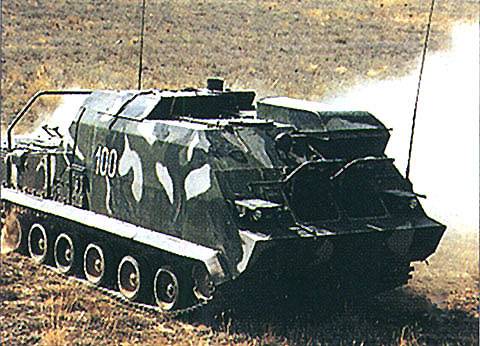
The crew of the command post could handle up to 46 targets in a zone with a radius of 100 km and at altitudes up to 20 km. During the review cycle of the detection and target designation station, up to 6 target designations were provided to self-propelled firing systems with an accuracy of 1 ° in azimuth and elevation, 400-700 m in range. The mass of the KP with a combat crew of 6 people did not exceed 28 tons. A machine equipped with a 710 liter diesel engine. sec., on the highway accelerated to 65 km / h. Cruising range - 500 km.
As part of the Buk air defense system, a 9C18 Kupol three-coordinate coherent-pulse air target detection station was used with an electronic beam scanning in the sector in the elevation angle (set to 30 ° or 40 °) and mechanical (in a circular or in a given sector) antenna rotation azimuth.
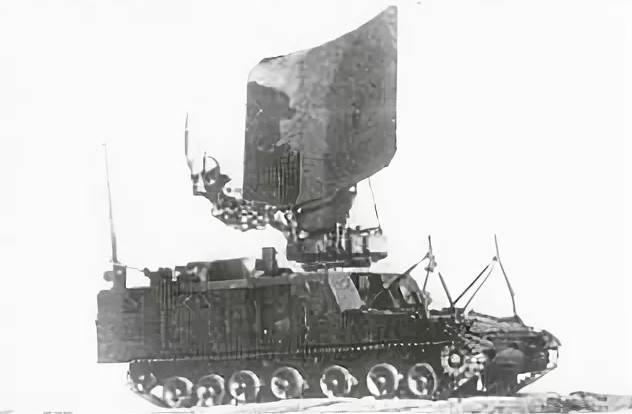
The detection and recognition of air targets was provided at a range of up to 120 km (45 km at a flight altitude of 30 m) while transmitting information about the air situation to the command post of the division. The station provided target tracking with a probability of at least 0,5 against the background of local objects and in passive interference using a moving target selection circuit with automatic wind speed compensation. Protection of the station from anti-radar missiles was achieved by software tuning the carrier frequency and switching to circular polarization of the probing signals or into intermittent radiation mode. The time of the radar transfer from traveling to combat - no more than 5 minutes, and from standby mode to working - no more than 20 s. The mass of the station with a crew of 3 is about 29 tons. The maximum speed on the highway is 60 km / h. Since the initial development of the SOC 9C18 “Dome” was carried out outside the scope of work on the Buk air defense system, and it was intended to be used as a means of detecting air targets of the air defense divisions of the ground forces, another tracked chassis was used for this station, which was very similar to the air defense system “ A circle".
Compared to the Cube family air defense system, the Buk complex, thanks to its own multi-functional radar on the SOU 9A310, had better combat stability and noise immunity, an increased number of target channels and anti-aircraft missiles ready for use. Self-propelled firing systems could carry out an independent search for targets in a given sector, each AA 9A310 had four anti-aircraft missiles. Self-propelled firing system is capable of performing the firing task of hitting a target autonomously - without target designation from the KP division. Telecode communication equipment provided a pair of self-propelled firing installations with a command post and a launcher-loading installation.
The time of the transfer of the JMA to the combat position is no more than 5 minutes. The time the unit was switched from standby to working, after changing the position with the equipment turned on, was no more than 20 s. In the case of replenishment of the ammunition from the launcher-loading installation, the full reload cycle is 12 minutes. When using a transport-loading machine, a full recharge cycle is 16 minutes.
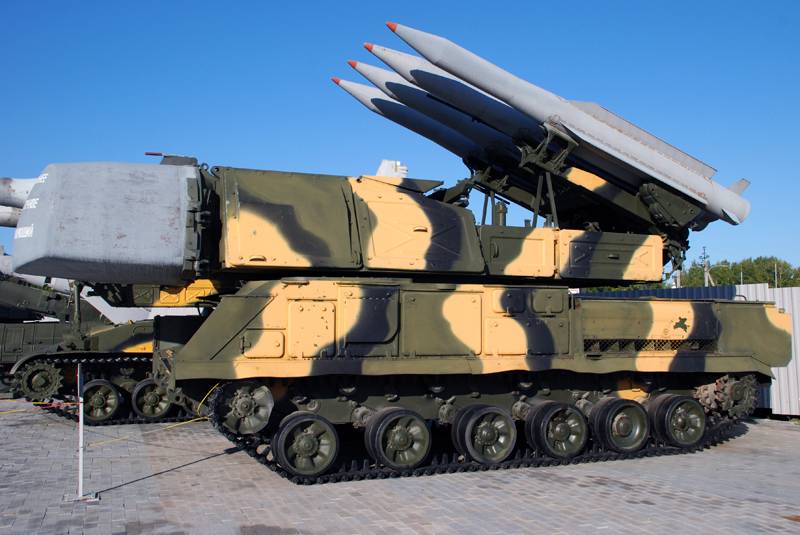
The crew of a four-person self-propelled firing system was protected by armor protecting against bullets and light fragments. The combat vehicle on the GM-579 tracked chassis weighed 34 tons and could reach speeds of up to 65 km / h on the highway.
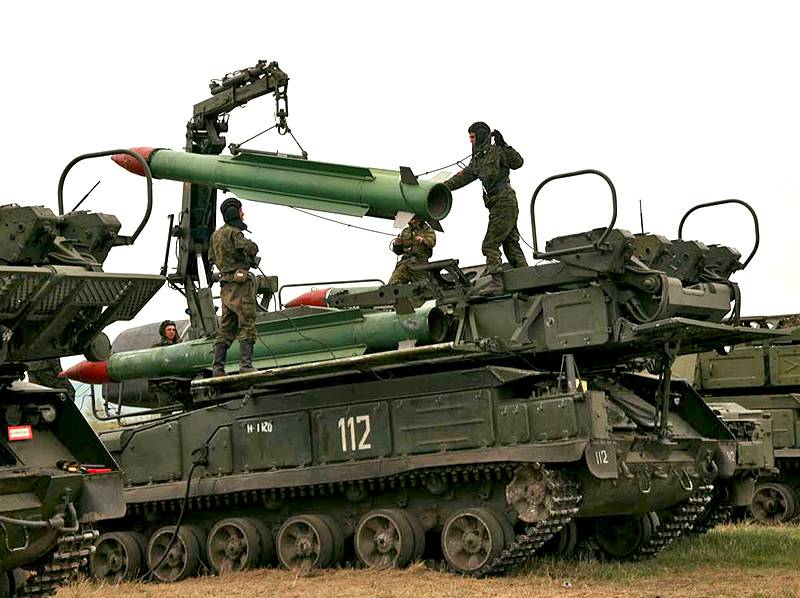
The 9A39 missile launcher was designed to transport, store and launch eight 9M38 missiles. The launch-loading installation, in addition to a starting device with a power follow-up drive, a crane and lodgements, included: navigation, topographic and orientation equipment, telecode communication and a power supply unit. The mass of the installation in the combat position is 35,5 tons. The crew is 3 people. Mobility and power reserve at the level of SOU 9A310.
To defeat aerodynamic targets in the Buk air defense system, 9M38 missiles were used. This rocket, made according to the normal aerodynamic design with an X-shaped wing, used a dual-mode solid-fuel engine with a total operating time of about 15 seconds. The missile was equipped with a semi-active radar seeker, with homing according to the method of proportional navigation. Target capture took place after the start, target illumination is carried out by radar СОУ 9А38.
9M38 missiles next to the automated control and test mobile station 9V95, designed for integrated verification of airborne anti-aircraft missile equipment
The launch mass of the rocket is about 690 kg. Length - 5500 mm, diameter - 400 mm, wingspan - 700 mm, wingspan - 860 mm. To destroy air targets, a fragmentation warhead weighing 70 kg is used, equipped with a charge weighing 34 kg of a mixture of TNT and RDX. The missile is equipped with an active pulsed radio fuse, which provides warhead detonation at a distance of 17 m from the target. When the fuse did not work, the rocket self-destructed. 9M38 missiles can hit targets at ranges from 3,5 to 32 km, with altitudes from 25 to 18000. The probability of hitting a fighter target with one missile was 0,7-0,8 (0,6 when maneuvering with overloads up to 8G) , helicopters at low altitude - 0,3-0,6, cruise missiles - 0,25-0,5. The anti-aircraft missile division could simultaneously fire at 6 targets.
Buk-М1 SAM
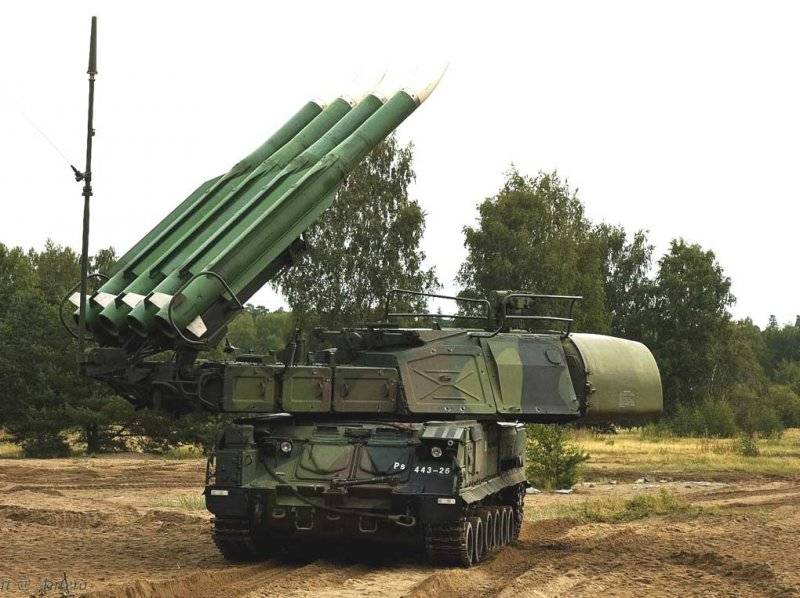
Immediately after the successful completion of state tests of the Buk air defense system, work began on its modernization. The customer demanded to increase the ability to combat cruise missiles and helicopters, increase the likelihood of destruction, and also ensure the defeat of operational-tactical ballistic missiles. The 9K37M1 Buk-M1 air defense system was adopted in 1983. All Buk-M1 air defense systems were fully interchangeable with elements of the basic modification complex.
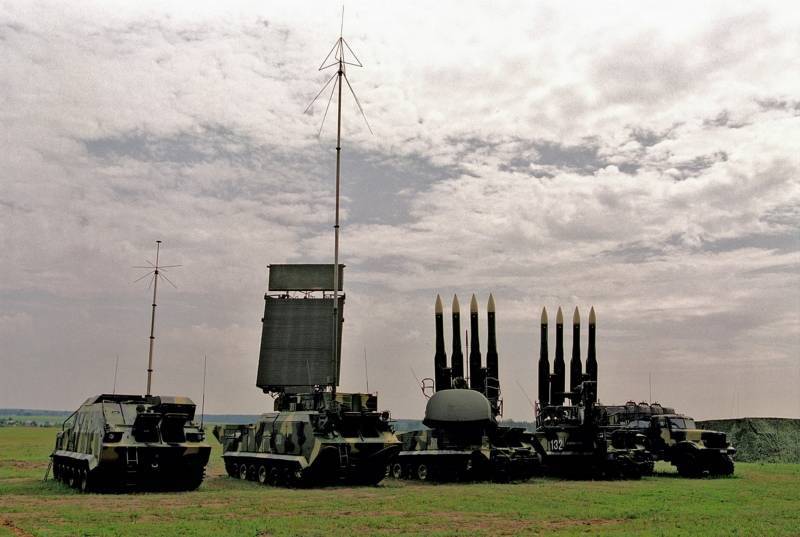
The main elements of the Buk-M1 anti-aircraft missile system. From left to right: mobile KP 9S470M1, SOTs 9S18M1 Kupol-M1, SOU 9A310M1, PZU 9A39M1 and transport and loading vehicle 9T229 on the KrAZ-255B chassis
To detect air targets as part of the Buk-M1 air defense system, a more advanced 9C18M1 Kupol-M1 airborne detection and targeting station was used on a new element base, which has a flat headlamp and a unified tracked chassis GM-567M.
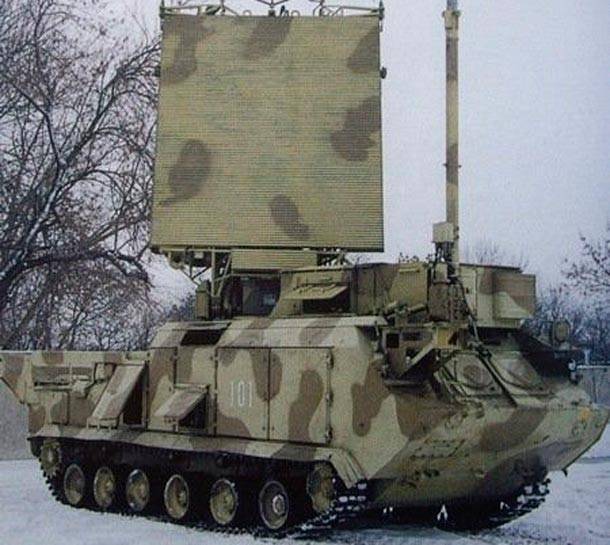
Command post 9С470М1 provides the simultaneous reception of information from its own SOTs and about six targets from the air defense control unit of the division or from the air defense army CP. Self-propelled firing system 9A310M1 provides detection and capture of targets for auto tracking at long ranges (25-30%), as well as recognition of aircraft, ballistic missiles and helicopters. The SOA 9A310M1 radar system uses 72 letters of illumination frequency (instead of 36), which improved protection against interference.
Along with the 9M38 SAM, the Buk-M1 air defense system used improved 9M38M1 missiles with a maximum firing range of 35 km. The probability of destroying a fighter target with one missile in the absence of organized interference is 0,8..0,95. The upgraded complex is capable of shooting down ALCM cruise missiles with a probability of destruction of at least 0,4, anti-tank AH-1 Huey Cobra helicopters with a probability of 0,6-0,7, and also hovering helicopters with a probability of 0,3-0,4 at a range from 3,5 to 10 km.
In addition to improving combat performance, the Buk-M1 air defense system was able to achieve greater operational reliability compared to Buk. The transfer of the main elements of the complex to a single tracked chassis simplified repair and maintenance. The Buk-M1 modification complexes became the most widespread in the family. Although the Buk air defense system was formally created to replace the Cube air defense system in the anti-aircraft missile regiments of tank divisions, in fact, it was mainly equipped with army submission anti-aircraft missile brigades. The brigade provided effective cover for troops in almost the entire range of heights from aircraft, helicopters and cruise missiles of the enemy. The Buk air defense system in the structure of the Soviet military air defense squeezed the Krug air defense system and partially replaced and supplemented the longer-range S-300V air defense systems.
Buk-М1-2 ADMS
The collapse of the USSR and the economic “reforms” that led to the underfunding of experimental design work seriously hindered the further improvement of the Buk family anti-aircraft missile systems. The next modification, the Buk-M1-2, was formally adopted only in 1998. Although it is not known about the purchase of such complexes by the RF Ministry of Defense, the Buk-M1-2 air defense system was a significant step forward thanks to the use of the new 9M317 SAM and the modernization of other elements of the complex. At the same time, tactical ballistic missiles, aircraft missiles at ranges up to 20 km, cruise missiles with low EPR, surface ships at ranges up to 25 km and radio-contrast ground targets at ranges up to 15 km were defeated. The far border of the affected area has been increased to 45 km, in height - up to 25 km. Flight speed - up to 1230 m / s, overload - up to 24 g. The launch mass of the rocket is 715 kg.
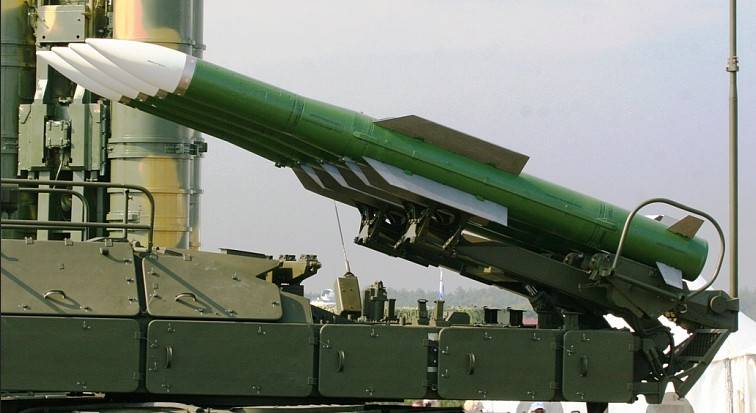
Externally, the 9M317 missiles differ from 9M38M1 in the shorter wing chord length. To control it, an inertial system with radio correction is used, combined with a semi-active radar seeker with an on-board computer, with guidance according to the proportional navigation method. The missile is equipped with a two-channel fuse - an active pulse and semi-active radar, as well as a system of contact sensors. The core warhead weighs 70 kg. When firing at surface and ground targets, the radio fuse is turned off and a contact fuse is used. The missile has a high level of reliability, a fully assembled and equipped missile does not require checks and adjustments over the entire life of 10 years.
The main elements of the Buk-M1-2 complex are made on the GM-569 chassis. The television-optical sight and laser rangefinder are added to the hardware of the SOU 9A310M1-2. In fact, “Buk-M1-2” is an option of “small” modernization of the Buk-M1 air defense system, during which, at the lowest cost, thanks to the introduction of the new 9M317 missile system, it was possible to achieve a significant improvement in combat performance. Subsequently, the developments obtained during the creation of the Buk-M1-2 air defense system were used to create more advanced systems.
Buk-М2 SAM
The next serial modification was the Buk-M2 SAM, adopted for service in 2008. At this complex, radar equipment and information display facilities have undergone a radical update. On all machines of the complex, screens with cathode ray tubes were replaced by multifunctional color LCD monitors. All combat vehicles are equipped with modern digital radio stations that provide reception and transmission of both voice information and coded target designation and target distribution data. In parallel with inertial navigation equipment, satellite navigation is used. The complex can be operated in various climatic zones, for this the machines are equipped with air conditioning.
Aerial targets are detected by SOC 9S18M1-3 with a centimeter-range coherent-pulse survey radar with electronic beam scanning in a vertical plane mounted on a GM-567M tracked chassis. Protection against interference is provided by the instantaneous adjustment of the pulse frequency, as well as by blocking the range intervals. From radar signals from the ground and other passive interference, the radar is protected by compensating for losses in direction, wind speed and selectivity of real targets. The target detection range with an EPR of 2 m² is 160 km.
The updated 9C510 command post was able to simultaneously process 60 targets and issue 36 target designations. In this case, the time from receiving information to transferring to firing systems is no more than 2 seconds.
The 9A317 self-propelled firing system on the GM-569 caterpillar chassis externally differs from the previous models of self-propelled guns by the flat surface of the radar with a phased antenna array. СОУ 9А317 can search for targets in the area of ± 45 ° in azimuth and 70 ° in elevation. The target detection range with an EPR of 2 m², flying at an altitude of 3 km - up to 120 km. Target tracking is carried out in the sector in azimuth ± 60 °, in elevation - from -5 to + 85 °. The installation is capable of simultaneously detecting up to 10 targets and firing up to 4 targets. The reaction time of the JMA is 4 seconds, and putting it on alert after a position change is 20 seconds. The calculation also has an all-day optoelectronic system with thermal imaging and television channels, which significantly increases the noise immunity and survivability of the air defense system. A number of sources say that with the SAU 9A317 without turning on the illumination and guidance radar, it is possible to use 9M317A anti-aircraft missiles with an active homing radar. But whether there are such missiles in the troops is unknown.
The 9A316 launcher and launcher was mounted on the GM-577 crawler chassis. As in the early Buk missile systems, it can be used as a launcher and a transport and loading vehicle. A crew of 4 people provides loading the 9A317 SOU with 9M317 missiles in 15 minutes. Self-loading time - 13 minutes.
A new element has been introduced into the Buk-M2 air defense system - a 9C36 missile target and missile guidance station. According to its characteristics, the station is similar to the radar used on the 9A317 SDA. Raising to a height of up to 22 m, the radar antenna post with the PAR is designed to direct the 9M317 missiles to targets flying at low and extremely low altitudes, in wooded and rough terrain. The rising antenna post provides an extension of the radio horizon at extremely low altitudes by more than 2,5 times, which makes it possible to detect cruise missiles flying at an altitude of 5 m, at a distance of up to 70 km.
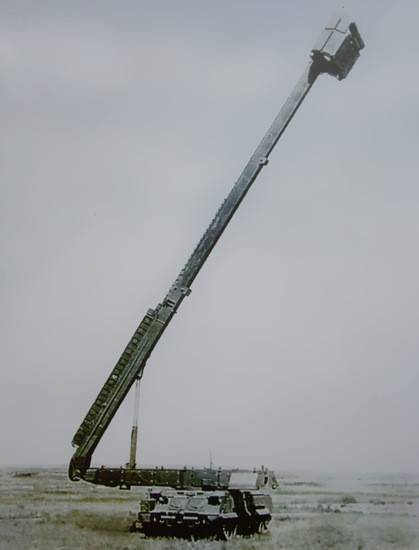
The first Buk-M2 production systems in 2009 received the 297th anti-aircraft missile brigade deployed in the vicinity of the village of Leonidovka in the Penza Region. According to information published in publicly available sources, as of 2019 in the Russian Army Buk-M2 air defense systems were equipped with 5 anti-aircraft missile brigades.
Buk-М3 SAM
In 2016, the Buk-M2016 SAM was demonstrated for the first time at the Army 3 international military-technical forum in Kubinka, and the complex was put into service the same year.
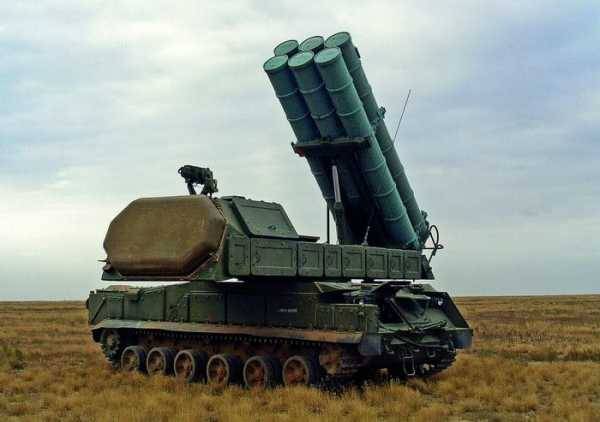
The main external difference between the Buk-M3 and Buk-M2 air defense systems was the use of new 9M317M anti-aircraft missiles delivered in transport and launch containers. At the same time, the ammunition ready for use on combat vehicles of the Buk-M3 SAM increased by 1,5 times. On the 9A317M self-propelled firing launcher, performed on the GM-5969 unified chassis, the number of missiles increased from 4 to 6, and on the 9A316M self-propelled launcher instead of 8 missiles, 12 missile launchers were deployed.
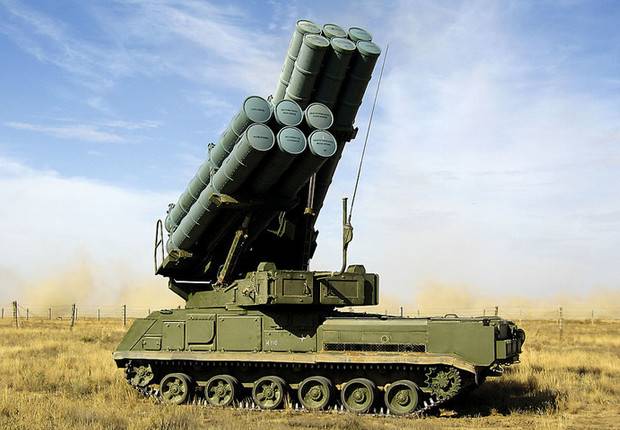
The characteristics of optoelectronic and radar detection and guidance means are similar to those used in the Buk-M2 air defense system. At the same time, the combat capabilities of the Buk-M3 air defense system were significantly enhanced thanks to the use of new anti-aircraft missiles. The complex provides simultaneous shelling of up to 36 air targets flying from different directions.
Unfortunately, it was possible to find a high-quality image of only the 9M317MFE missile, which is used as part of the Shtil-1E space-based air defense system. In the ship's version, the rocket is vertically ejected from the transport and launch container to a height of 10 meters with the subsequent engine starting.
9M317M missiles is a single-stage solid-fuel rocket, made according to the normal aerodynamic scheme. The length of the rocket is 5180 mm, the diameter of the hull is 360 mm, the range of the rudders is 820 mm. Due to the fact that the rocket is equipped with a more powerful dual-mode engine with increased operating time, the controlled flight range of 9M317M has been increased to 70 km. Reach in height - 35 km, flight speed - 1550 m / s. The missile is delivered and stored in an airtight transport and launch container, completely ready for combat use, and does not require on-board equipment inspections during the entire specified period of operation.
At the main stage of the flight, the rocket is controlled by an autopilot with correction for radio signals, and when approaching the target, a semi-active Doppler radar homing head with an integrated on-board computer is used. However, this guidance method requires radar illumination at the final stage, which significantly unmasks the air defense systems and limits the range of use of the radio horizon. To eliminate this drawback, the 9M317MA missile system with an active homing radar was developed. The use of missiles with ARGS makes it possible to fire with off-load tap-changers, which greatly increases the survivability of the division. The characteristics of the ARGSN used on the 9M317MA rocket make it possible to capture a target with an EPR of 0,3 m² at a distance of up to 35 km.
After adopting the Buk-M3 air defense system, they began to actively replace the obsolete and exhausted Soviet-built Buk-M1 systems. According to information published in the Russian media at the end of 2017, 3 anti-aircraft missile brigades partially or completely switched to new systems.
SAM "Buk-M1", "Buk-M2" and "Buk-M3" in the armed forces of Russia
During the years of "Serdyukovschina" a certain amount of air defense systems of the Buk family was withdrawn from the air defense units of the ground forces. Anti-aircraft missile brigades disbanded, and their equipment, weapons and personnel were transferred to the air defense missile defense air defense systems to equip anti-aircraft missile regiments that perform missions to cover important strategic targets. So, in the course of “giving a new look”, the holes formed in our air defense system after the decommissioning of the S-200VM / D and S-300PT air-defense systems that had exhausted their life, patched up.
The Buk family air defense systems were originally created in the interests of the air defense of the ground forces, but quite often they are used to cover important military and civilian objects from air attack weapons. A typical example of this approach is the position in the Uch-Dere region, about 8 km northwest of the center of Sochi.
According to The Military Balance 2016, four years ago there were more than 400 Buk-M1 and Buk-M2 air defense systems in the Russian armed forces. Apparently, the reference book refers to self-propelled gun mounts and launch-loading vehicles, that is, equipment with which anti-aircraft missiles can be launched. Thus, in the anti-aircraft missile brigades of the air defense of the ground forces and in the anti-aircraft missile regiments of the airborne forces should be more than 60 divisions. However, this estimate is excessively high. According to more realistic information, cited by domestic and foreign experts, in 2018, the army defense forces of the military unit had: 10 Buk-M1 launchers, 12 Buk-M2 launchers, and 8 Buk-M3 launchers. In total, at that time, the troops included: 90 SOU 9A310M1 and PZU 9A39M1 (SAM Buk-M1), 108 SOU 9A317 and PZU 9A316 (Buk-M2), 32 SOU 9A317M and SPU 9A316M (Buk-M3). Considering that the Buk-M1 modification systems are being removed from service and replaced by Buk-M2 and Buk-M3, the number of anti-aircraft missile divisions in anti-aircraft missile brigades remains at approximately the same level.
Although military air defense systems on a caterpillar chassis are not very well suited for carrying out long combat duty, after re-equipping anti-aircraft missile brigades with new equipment and mastering it with personnel, anti-aircraft missile battalions are alternately involved to provide air defense for large military garrisons, air bases and other important defense facilities.
Satellite image Google Earth: position of the Buk-M2 air defense system in the vicinity of Afipsky, Krasnodar Territory
Judging by satellite images, one 90th air defense missile division deployed in the village of Afipsky, Krasnodar Territory, after rearmament in 2015 with Buk-M1 air defense systems to Buk-M2, has been on combat duty on an ongoing basis.
The same applies to the 140th air defense missile system, deployed near the large air base of Domna in the Trans-Baikal Territory. Since the place of permanent deployment of equipment and weapons of the anti-aircraft missile brigade is located in close proximity to the air base, combat alert is conducted on the site near the boxes where fighting vehicles are stored.
Currently available in the troops of the Buk-M2 / M3 air defense system, they are able to cover groups of the RF Armed Forces in the entire range of heights and accompany tank and motorized rifle divisions on the march and in the frontline. In the event of the outbreak of war, they should not only provide protection against air strikes of groupings, associations and bases, but also be involved in solving the country's air defense tasks in places of deployment. However, taking into account the need to write off the remaining Buk-M1 air defense systems and improve the enemy’s air attack facilities, a number of anti-aircraft missile brigades need to be re-equipped with modern systems.
To be continued ...
- Linnik Sergey
- Do we have many air defense systems? Anti-aircraft artillery and MANPADS
Do we have many air defense systems? SAM "Strela-10", SAM "Bagulnik" and ZAK "Derivatsiya-PVO"
Air defense systems in the Russian Federation. SAM "Osa" and SAM "Tor"
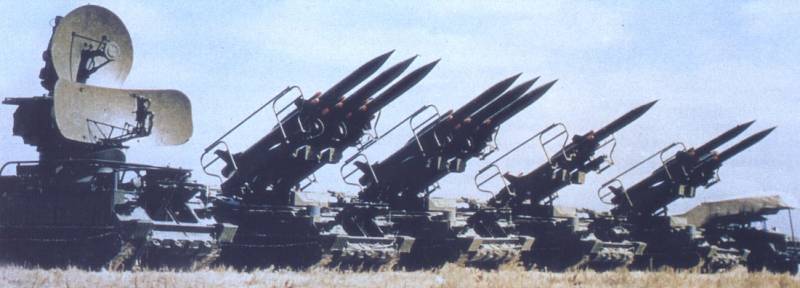
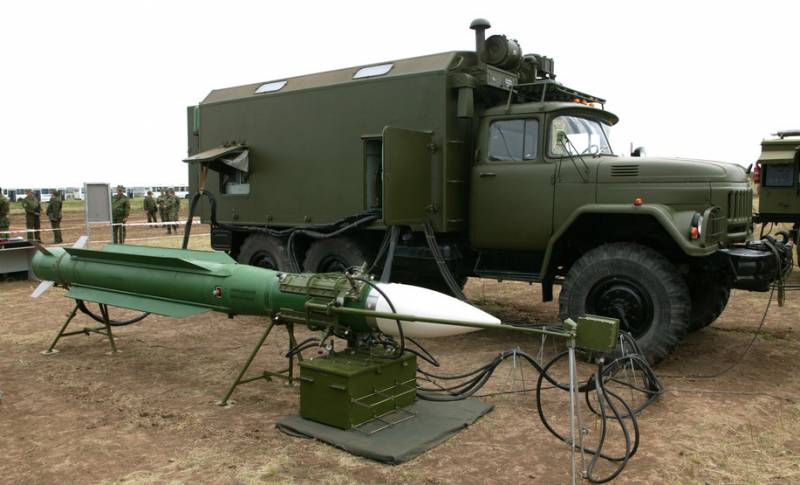
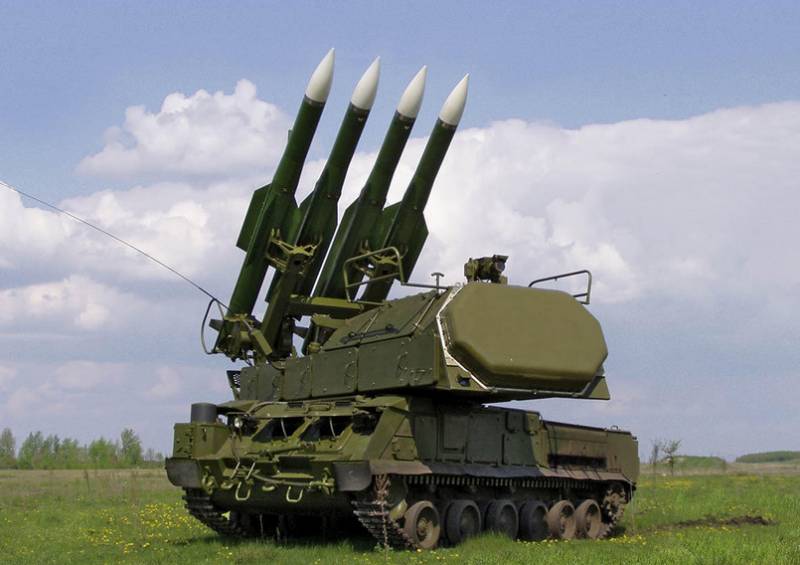
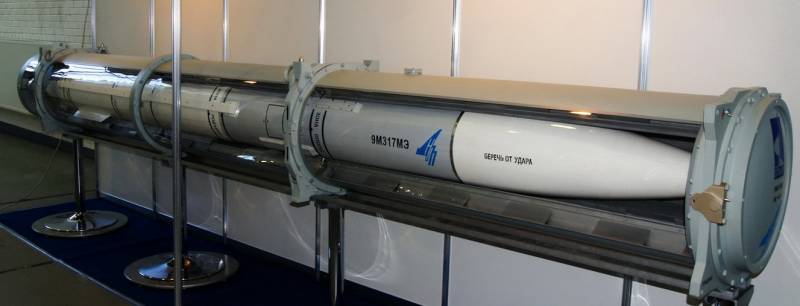
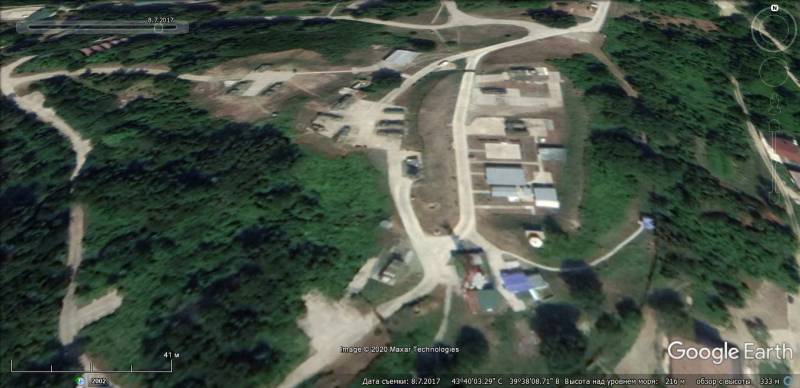
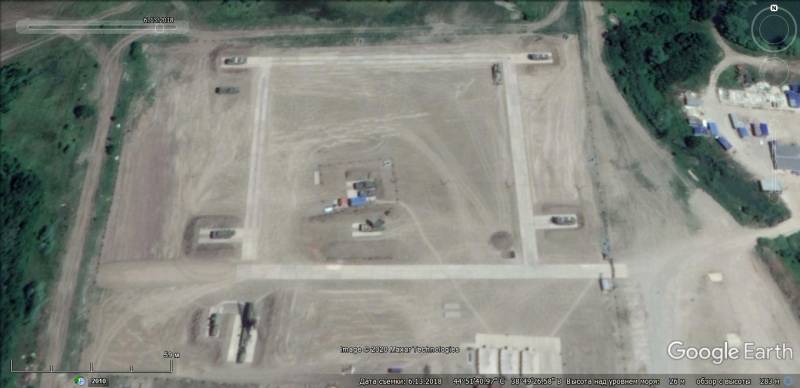
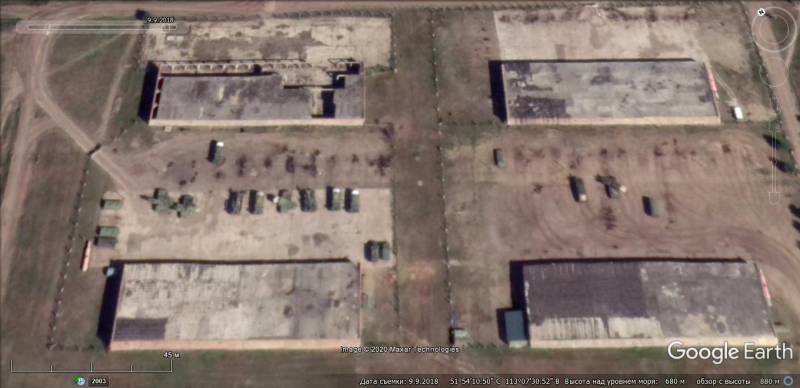
Information